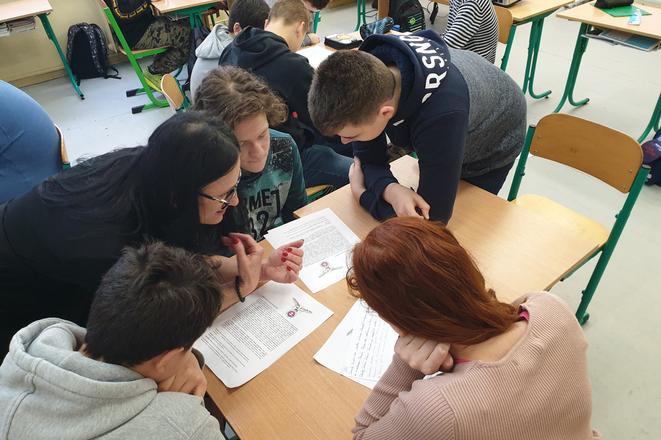A group of 16 pupils – most of them boys, only one girl – are waiting for their lesson to start. The school, a private institution located in one of the residential areas of the central-Slovak town of Martin, is silent. All the other lessons have already started on time. But a group of eight- and nine-graders will not participate in their usual classes today.
The classroom they are gathered in, with its yellow walls, an interactive board and maps of Slovakia and the world pinned on a notice board, is buzzing. The teenagers sitting at the desks have been looking forward to their short Friday, with a PE class. Now they are wondering what will replace their usual programme.
“Is there anyone here interested in history?” the lecturer asks as she takes her place in front of the board. Nobody raises their hand.
Bridging history and present
The lecturer is Iveta Harváneková and along with another lecturer, Dagmar Kúdelová Kopčanská, they work for Post Bellum, an NGO that searches for and documents the stories of contemporary witnesses of crucial 20th century events.
One of the things they do is this workshop for pupils and students of primary and secondary schools, intended to provide something close to a first-hand experience of some dilemmas and make important decisions.
Today, the pupils will talk about forced migration, xenophobia and antisemitism. They will also shortly experience the change of atmosphere in society back in the 1930s in Czechoslovakia and later the Slovak state.
“All the topics of the workshops are chosen so as to connect history and the present,” Dagmar Kúdelová Kopčanská told The Slovak Spectator. “To make children understand that history repeats itself. We would like to point out what could happen when we believe in certain untruths, what could happen to individuals, certain communities or all society.”



 Group is working on the assignment. (source: NF)
Group is working on the assignment. (source: NF)